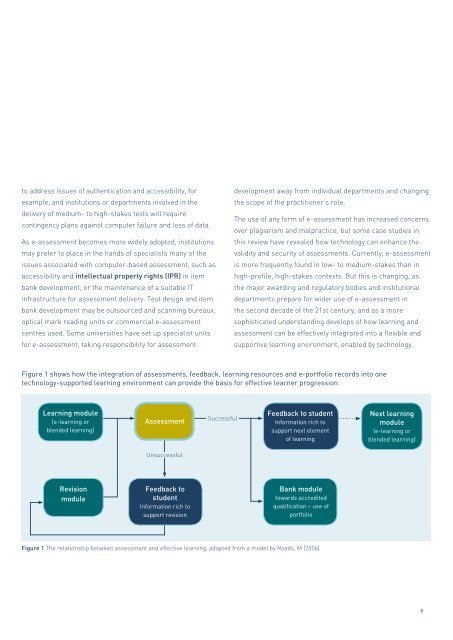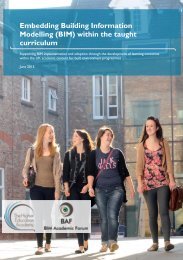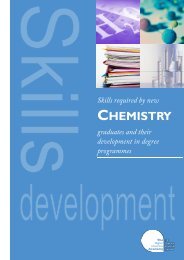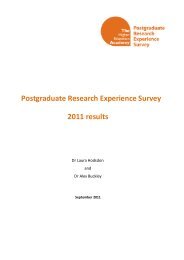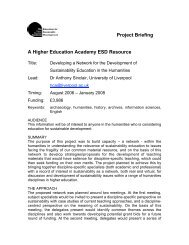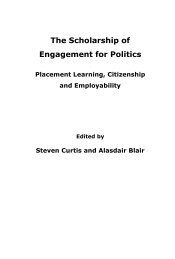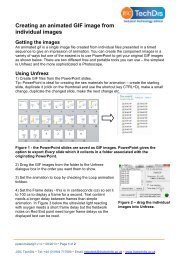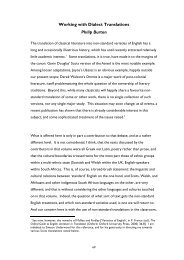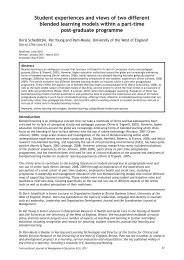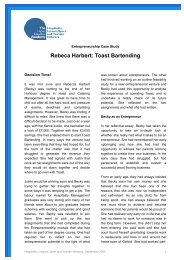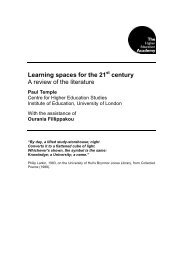Effective Practice with e-Assessment: An overview of ... - Jisc
Effective Practice with e-Assessment: An overview of ... - Jisc
Effective Practice with e-Assessment: An overview of ... - Jisc
You also want an ePaper? Increase the reach of your titles
YUMPU automatically turns print PDFs into web optimized ePapers that Google loves.
to address issues <strong>of</strong> authentication and accessibility, for<br />
example, and institutions or departments involved in the<br />
delivery <strong>of</strong> medium- to high-stakes tests will require<br />
contingency plans against computer failure and loss <strong>of</strong> data.<br />
As e-assessment becomes more widely adopted, institutions<br />
may prefer to place in the hands <strong>of</strong> specialists many <strong>of</strong> the<br />
issues associated <strong>with</strong> computer-based assessment, such as<br />
accessibility and intellectual property rights (IPR) in item<br />
bank development, or the maintenance <strong>of</strong> a suitable IT<br />
infrastructure for assessment delivery. Test design and item<br />
bank development may be outsourced and scanning bureaux,<br />
optical mark reading units or commercial e-assessment<br />
centres used. Some universities have set up specialist units<br />
for e-assessment, taking responsibility for assessment<br />
development away from individual departments and changing<br />
the scope <strong>of</strong> the practitioner’s role.<br />
The use <strong>of</strong> any form <strong>of</strong> e-assessment has increased concerns<br />
over plagiarism and malpractice, but some case studies in<br />
this review have revealed how technology can enhance the<br />
validity and security <strong>of</strong> assessments. Currently, e-assessment<br />
is more frequently found in low- to medium-stakes than in<br />
high-pr<strong>of</strong>ile, high-stakes contexts. But this is changing, as<br />
the major awarding and regulatory bodies and institutional<br />
departments prepare for wider use <strong>of</strong> e-assessment in<br />
the second decade <strong>of</strong> the 21st century, and as a more<br />
sophisticated understanding develops <strong>of</strong> how learning and<br />
assessment can be effectively integrated into a flexible and<br />
supportive learning environment, enabled by technology.<br />
Figure 1 shows how the integration <strong>of</strong> assessments, feedback, learning resources and e-portfolio records into one<br />
technology-supported learning environment can provide the basis for effective learner progression.<br />
Learning module<br />
(e-learning or<br />
blended learning)<br />
<strong>Assessment</strong><br />
Successful<br />
Feedback to student<br />
Information rich to<br />
support next element<br />
<strong>of</strong> learning<br />
Next learning<br />
module<br />
(e-learning or<br />
blended learning)<br />
Unsuccessful<br />
Revision<br />
module<br />
Feedback to<br />
student<br />
Information rich to<br />
support revision<br />
Bank module<br />
towards accredited<br />
qualification – use <strong>of</strong><br />
portfolio<br />
Figure 1 The relationship between assessment and effective learning, adapted from a model by Roads, M (2006)<br />
9


